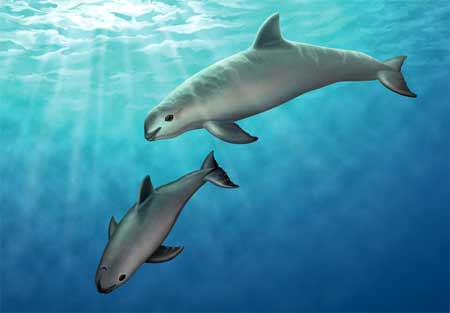When we talk about endangered animals, we're not just discussing cute creatures that might vanish. We're highlighting the delicate balance of ecosystems and how human actions can tip the scales. From lush rainforests to vast oceans, countless species are on the brink of extinction. Let’s dive deep into the top 10 most endangered animals and why saving them matters.
Before we jump into the list, it’s crucial to understand why these creatures are at risk. Here are the main culprits:
Habitat Loss: Deforestation, urbanization, and agriculture are shrinking natural habitats.
Climate Change: Rising temperatures and altered weather patterns disrupt ecosystems.
Illegal Poaching and Trade: Many animals are hunted for their fur, tusks, or other body parts.
Pollution: Plastic, chemicals, and waste poison natural habitats.
Invasive Species: Non-native predators or competitors often outpace local wildlife.
The International Union for Conservation of Nature (IUCN) classifies species into categories like "vulnerable," "endangered," and "critically endangered." Endangered species face a very high risk of extinction in the near future.
Now, let’s explore the ten animals that desperately need our attention:
Habitat: Northern part of the Gulf of California, Mexico
Population: Fewer than 10 individuals
Threats: Bycatch in illegal fishing nets
The vaquita, a small porpoise, is often referred to as the "panda of the sea." Its population has dwindled due to fishing practices, particularly the use of gillnets.

Habitat: Russian Far East and Northeast China
Population: Around 120
Threats: Poaching and habitat destruction
Known for its beautiful coat, the Amur leopard is critically endangered, with habitat loss and illegal hunting as its main threats.
Habitat: Ujung Kulon National Park, Indonesia
Population: Approximately 80
Threats: Habitat loss and diseases
This rhino species is one of the rarest in the world. All remaining individuals live in a single protected park.
Habitat: Africa and Asia
Population: Varies by species
Threats: Illegal wildlife trade
Pangolins are the most trafficked mammals globally, hunted for their scales and meat.
Habitat: New Zealand
Population: About 250
Threats: Predators introduced by humans
This nocturnal, flightless parrot was nearly wiped out due to introduced predators like cats and rats.
Habitat: Lakes and rivers in China and Vietnam
Population: Only 3 confirmed
Threats: Habitat destruction and pollution
This turtle is critically endangered due to habitat loss and pollution in its freshwater homes.
Habitat: Mountainous regions of central Africa
Population: Around 1,000
Threats: Poaching, disease, and deforestation
Thanks to conservation efforts, their numbers are slowly rising, but they’re still at risk.
Habitat: Lakes near Mexico City
Population: Extremely limited in the wild
Threats: Habitat destruction and pollution
These “walking fish” are popular in labs but struggle to survive in their natural habitat.
Habitat: Annamite Mountains, Laos, and Vietnam
Population: Unknown but critically low
Threats: Hunting and habitat loss
Dubbed the “Asian unicorn,” the Saola is rarely seen and highly elusive.
Habitat: Tropical oceans worldwide
Population: Declining
Threats: Poaching and pollution
Their beautifully patterned shells make them a target for illegal trade.
Saving endangered animals isn’t just the job of conservationists. Here’s how we can all contribute:
Support Conservation Programs: Donate to organizations like WWF or IUCN.
Avoid Products from Endangered Species: Be mindful of what you buy.
Reduce Your Carbon Footprint: Use public transport, recycle, and conserve energy.
Raise Awareness: Educate others about endangered species.
Protect Habitats: Volunteer for habitat restoration projects.
Every species plays a role in its ecosystem. Losing one can lead to cascading effects that harm other species, including humans. Biodiversity ensures the health of the planet, stabilizing climates and providing resources like food and medicine.
| Animal | Habitat | Population | Major Threats |
|---|---|---|---|
| Vaquita | Gulf of California, Mexico | Fewer than 10 | Bycatch in fishing nets |
| Amur Leopard | Russian Far East, China | Around 120 | Poaching, habitat loss |
| Javan Rhino | Indonesia | ~80 | Habitat loss, disease |
| Pangolin | Africa, Asia | Varies | Wildlife trade |
| Kakapo | New Zealand | ~250 | Predators |
| Yangtze Giant Softshell Turtle | China, Vietnam | Only 3 confirmed | Pollution, habitat loss |
| Mountain Gorilla | Central Africa | ~1,000 | Poaching, disease |
| Axolotl | Lakes near Mexico City | Very few | Habitat destruction |
| Saola | Laos, Vietnam | Unknown | Hunting, habitat loss |
| Hawksbill Turtle | Tropical Oceans | Declining | Poaching, pollution |
By taking action today, we can ensure a brighter future for these incredible creatures. The clock is ticking—let’s make every moment count!
animal tags: most-endangered-animals
We created this article in conjunction with AI technology, then made sure it was fact-checked and edited by a Animals Top editor.